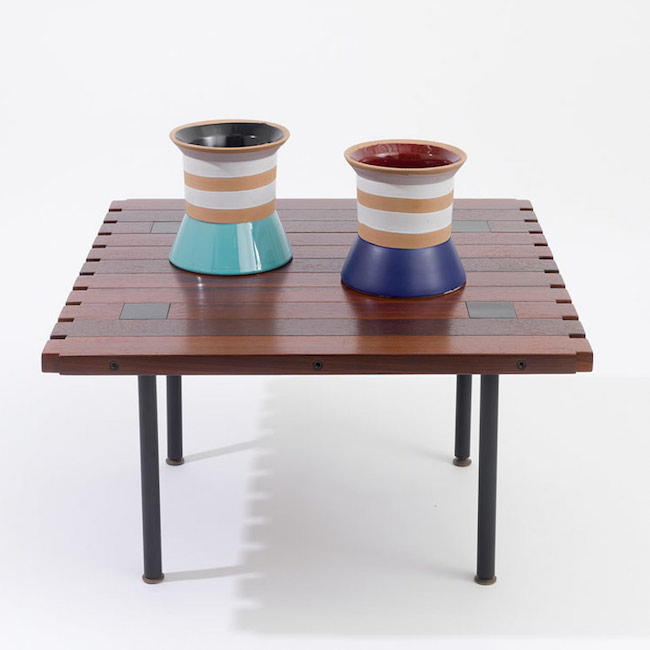The Friedman Benda gallery (New York City, September 10 – October 17, 2015) is exhibiting the pre-Memphis Group work of Italian architect and designer Ettore Sottsass (1917 – 2007). Sottsass founded the influential postmodern design group in Milan in 1981. The Friedman exhibition covers Sottsass’ development to this important milestone by showing his work from the years 1955 – 1969.
Ettore Sottsass, Rocchetti Vase, 1959, terracotta, 7.28 x 7.87 x 7.87 inches and Rocchetti Vase,1959, 7.28 x 7.87 x 7.87 inches

Ettore Sottsass, Rocchetti Vase, 1957

Ettore Sottsass, Tantra Vase, 1968. Photograph by Adam Reich.
For the ceramophiles in our readership, the exhibition features many unique and rarely-displayed ceramics in addition to Sottsass’ photographs, lighting fixtures and furniture.
The gallery states:
“Ettore Sottsass 1955-1969 will serve as a gateway to understanding an extremely diverse and fertile 15-year period in Italian design and art, which precedes the years of Radical Design. These are the formative years for the designer who used ceramics as a laboratory for developing a new language of design. Rare ceramics on view will include work from every important series of this period and several are derived from Sottsass’s memories and reflections of his travels to India, to the U.S., and from personal life experiences. Among them will be examples of Lava (1957), Tondi (1959), and Tenebre (1963), the designer’s “Darkness” series in somber tones with mandala-like imagery, conceived during a protracted illness. Others will be from Shiva (1964), a series celebrating his return to good health with homage to the Indian deity, the great conqueror of death, and from the Tantra (1968), and Fumo (1969), series. All of these works have been extensively published and collected by museums worldwide.
“Furniture and lighting will also include major one-of-a-kind pieces: the first showing in the United States of a bookshelf made for a director of Olivetti; front slatted rosewood cabinets, one in white and one in red; and examples of mirrors and lighting designed for Arredoluce. Sottsass, who worked in a variety of media, produced many of these works for his patrons, while others were created as artistic expressions in his studio practice.”
Love contemporary ceramic art + design? Let us know in the comments.

Ettore Sottsass, Tondi Plate, 1959, ceramic, 12.2 x 12.2 inches

Ettore Sottsass, Tondi plate, 1959, ceramic

Ettore Sottsass, Library, 1965, lacquered wood and walnut with brass, 102.4 x 96.1 x 12.8 inches




“Ettore Sottsass 1955 – 1969” at Friedman Benda, New York. Photographs courtesy of the gallery.

What a treat!